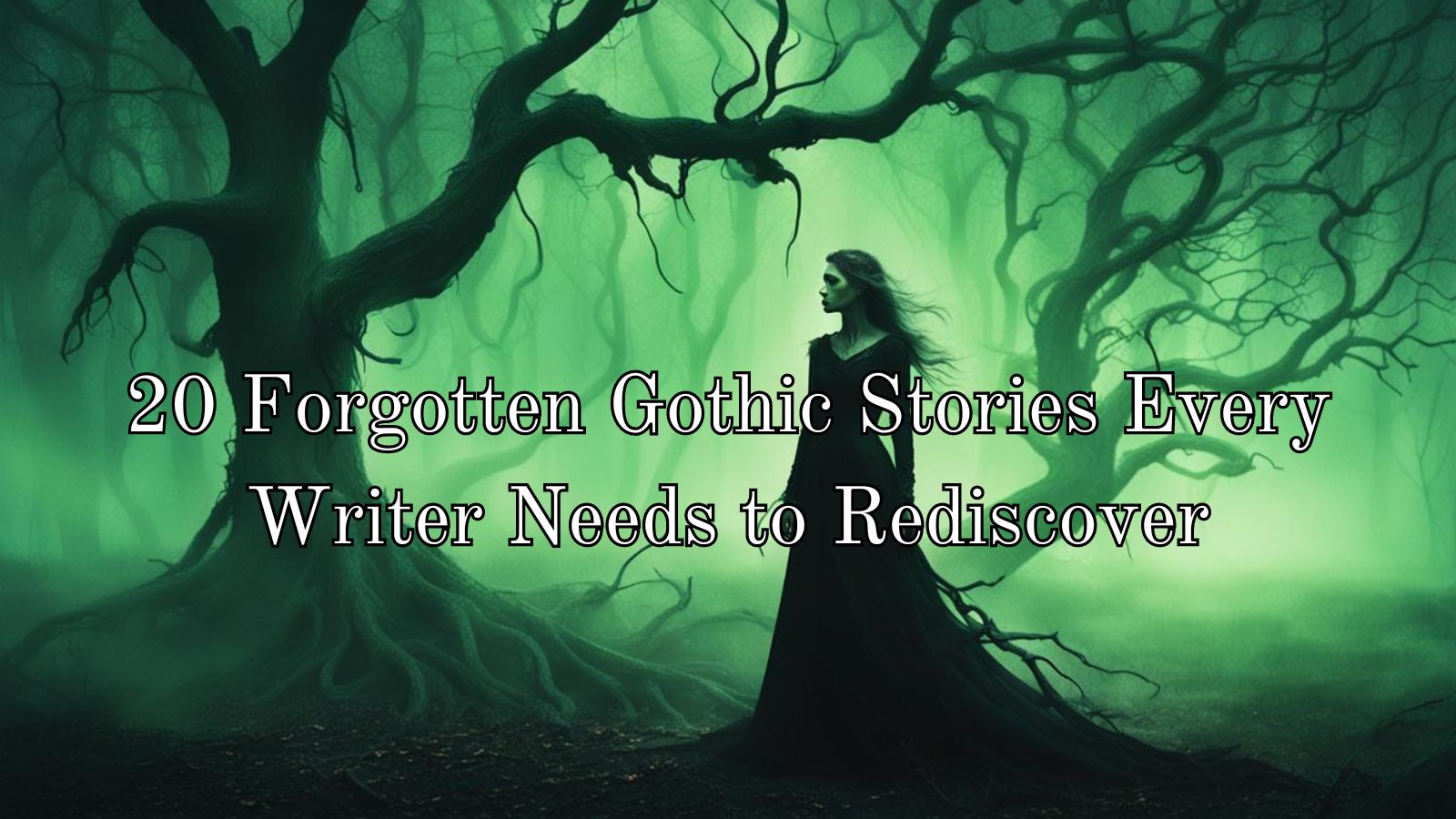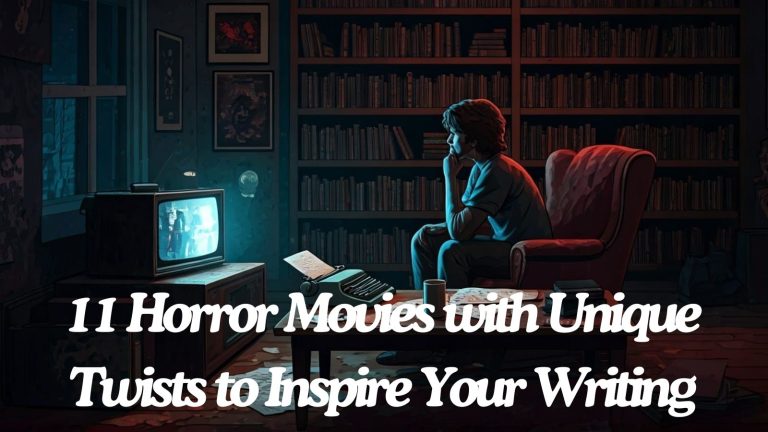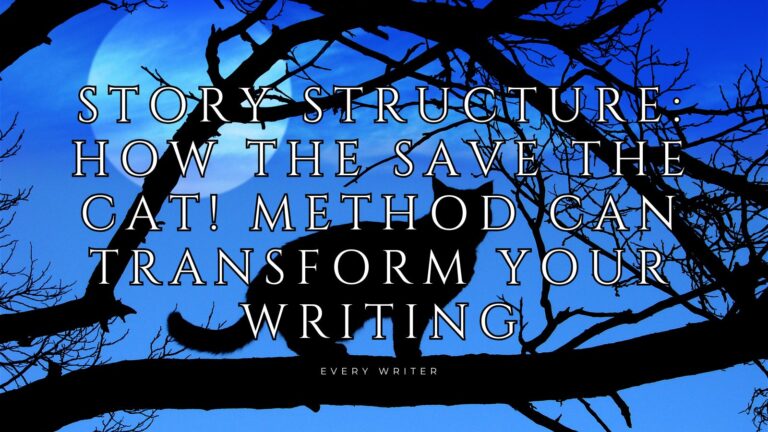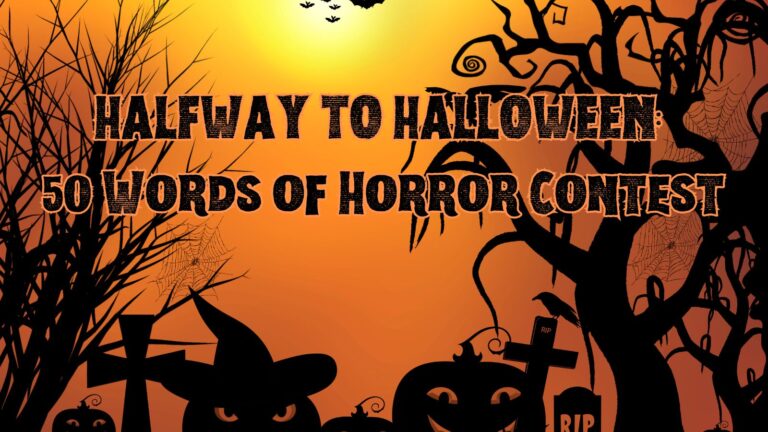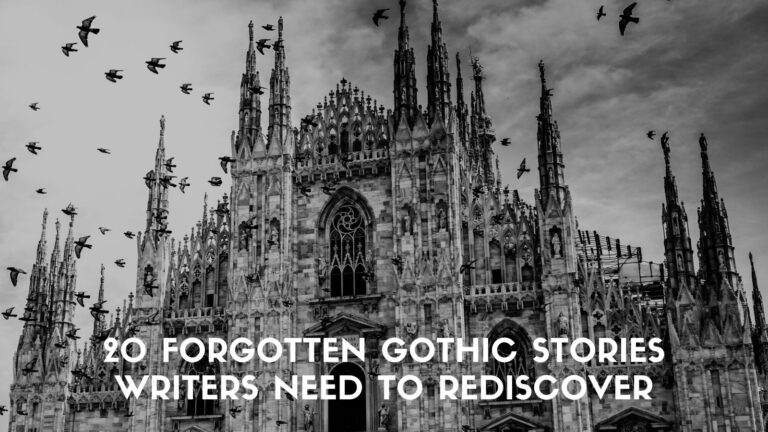20 Forgotten Gothic Stories Every Writer Needs to Rediscover
In the vast library of gothic literature, some brilliant gems have been overshadowed by their more famous counterparts. The grand halls of horror fiction echo with names like Poe, Shelley, and Stoker, their works standing as timeless pillars of the genre. Yet, hidden in the shadows cast by these literary giants, lie forgotten tales that whisper of untold terrors and unexplored depths of the human psyche.
As writers, we often find ourselves returning to the well-known classics for inspiration, studying their techniques and absorbing their atmospheres. However, by limiting ourselves to these familiar works, we risk treading the same worn paths, our creativity constrained by the boundaries of what’s come before. It is in the dusty corners of gothic literature, among the overlooked and the underappreciated, that we may find the spark to ignite new passions and fresh ideas.
Rediscovering these forgotten tales can be a transformative experience for a writer. Each story offers a unique perspective on the genre, showcasing different approaches to crafting suspense, developing characters, and evoking the uncanny. From the psychological intricacies of lesser-known authors to innovative narrative structures that challenge conventions, these works provide a masterclass in the art of gothic storytelling.
Moreover, these overlooked stories often reflect the evolving fears and anxieties of their times, offering valuable insights into the historical development of the genre. By studying them, we can trace the threads of gothic fiction through history, understanding how it has adapted and transformed in response to changing societal concerns. This knowledge can inform our own writing, allowing us to create works that resonate with contemporary audiences while honoring the rich tradition of gothic literature.
In light of this, we present a curated list of 20 forgotten gothic stories that deserve a place on every writer’s reading list. These tales, ranging from the subtly unsettling to the overtly terrifying, represent a treasure trove of inspiration waiting to be unearthed. By delving into these overlooked masterpieces, we not only pay homage to the unsung heroes of gothic fiction but also arm ourselves with new tools and techniques to craft our own chilling narratives. Let us embark on this journey of rediscovery, and in doing so, reignite our passion for the endless possibilities of gothic literature.
-
“The Beckoning Fair One” by Oliver Onions (1911)
Oliver Onions’ masterpiece of psychological horror follows Paul Oleron, a writer who moves into a dilapidated house and becomes increasingly obsessed with its spectral inhabitant. The story’s brilliance lies in its ambiguity, blurring the lines between supernatural occurrence and mental breakdown. Onions crafts an oppressive atmosphere that gradually tightens around the protagonist, mirroring his descent into madness. The house itself becomes a character, its decay reflecting Oleron’s deteriorating psyche. Writers can learn much from Onions’ subtle buildup of tension and his skillful use of unreliable narration to keep readers questioning the reality of events until the chilling conclusion.
-
“The Shadows on the Wall” by Mary E. Wilkins Freeman (1903)
Freeman’s haunting tale centers on three sisters dealing with the aftermath of their brother’s mysterious death. The story’s power lies in its transformation of an ordinary object – shadows on a wall – into a source of creeping dread. Freeman’s prose is a masterclass in suggestion, hinting at horrors without fully revealing them. The familial dynamics add layers of tension, with each sister reacting differently to the supernatural manifestation. Through this, Freeman explores themes of guilt, grief, and the secrets that can tear families apart. The story’s confined setting amplifies the claustrophobic atmosphere, demonstrating how gothic horror can thrive in domestic spaces.
-
“The Ghost Ship” by Richard Middleton (1912)
Middleton’s dreamlike narrative transports readers to a small English village suddenly visited by a phantom ship. The story’s strength lies in its lyrical prose, which creates a mesmerizing, otherworldly atmosphere. Middleton blends the mundane with the fantastic, as villagers react to the supernatural event with a mix of wonder and matter-of-factness. The ghost ship serves as a powerful metaphor for the intrusion of the extraordinary into everyday life. Writers can study Middleton’s use of vivid imagery and poetic language to evoke a sense of the uncanny. The story’s open-ended nature leaves room for multiple interpretations, enhancing its haunting effect.
-
“The Lost Ghost” by Mary E. Wilkins Freeman (1903)
Freeman’s poignant ghost story revolves around a spectral child and the women who encounter her. The tale stands out for its emotional depth, using supernatural elements to explore themes of maternal love, loss, and loneliness. Freeman’s characterization is particularly strong, painting vivid portraits of the women whose lives intersect with the ghost. The story’s structure, told through multiple perspectives, adds layers to the narrative and allows for a gradual unveiling of the ghost’s tragic history. Writers can learn from Freeman’s ability to evoke sympathy for both the living and the dead, demonstrating how ghost stories can be vehicles for profound emotional exploration.
-
“The Red Lodge” by H. Russell Wakefield (1928)
Wakefield’s tale of a haunted house is a masterclass in the gradual escalation of horror. The story follows a family who moves into a seemingly idyllic country home, only to face escalating supernatural phenomena. Wakefield’s genius lies in his pacing, slowly building tension through small, unsettling incidents that compound over time. The author’s attention to sensory details helps create a vivid, oppressive atmosphere. Through the family’s experiences, Wakefield explores themes of skepticism versus belief, and the psychological toll of prolonged exposure to the inexplicable. The story serves as an excellent study in how to maintain and intensify suspense throughout a narrative.
-
“The Upper Berth” by F. Marion Crawford (1894)
Crawford’s claustrophobic tale set aboard a transatlantic steamer demonstrates the power of confined spaces in horror. The story follows a passenger assigned to a cabin with a grisly history of unexplained deaths. Crawford’s vivid descriptions of the ship’s cramped quarters heighten the sense of inescapable dread. The protagonist’s initial skepticism gives way to terror as he faces the malevolent presence in his cabin. The story’s strength lies in its building of tension through isolation and the protagonist’s mounting fear. Writers can learn from Crawford’s effective use of setting to create a pressure-cooker atmosphere of horror.
-
“The Doppelgänger” by Dorothy Macardle (1928)
Macardle’s exploration of the double motif delves deep into psychological territory. The story follows a woman increasingly tormented by encounters with her exact double. Macardle uses the doppelgänger concept to explore themes of identity, self-perception, and the fragility of the human psyche. The author’s prose skillfully blends realism with the uncanny, making the protagonist’s experiences all the more unsettling. As the narrative progresses, the line between reality and delusion blurs, leaving readers questioning the nature of the events. Writers can study Macardle’s technique of using supernatural elements as a lens to examine deep-seated psychological fears.
-
“The Haunted Dolls’ House” by M.R. James (1923)
James’ chilling tale centers on a collector who acquires a perfect miniature dollhouse, only to witness a horrifying scene play out within it. The story showcases James’ meticulous approach to horror, gradually revealing the dollhouse’s dark history. James’ attention to detail in describing the miniature scene creates a sense of unease that builds to outright terror. The story explores themes of voyeurism and the consequences of disturbing the past. Writers can learn from James’ technique of using precise, measured prose to create maximum impact, and his skill in turning a seemingly innocent object into a source of horror.
-
“The Wendigo” by Algernon Blackwood (1910)
Blackwood’s tale of cosmic horror set in the Canadian wilderness is a masterclass in using landscape to evoke dread. The story follows a hunting party who encounter the legendary Wendigo, a spirit of the wild. Blackwood’s vivid descriptions of the vast, indifferent forest create a palpable sense of isolation and vulnerability. The author skillfully builds tension through the characters’ growing awareness of an unseen presence. The Wendigo itself remains largely unseen, with Blackwood relying on suggestion and the characters’ terror to convey its horrifying nature. Writers can study Blackwood’s technique of turning setting into a character in its own right, and his ability to evoke cosmic dread through the vastness of nature.
-
“The Tomb of Sarah” by F.G. Loring (1900)
Loring’s unconventional vampire tale blends historical elements with supernatural horror to breathe new life into a classic monster. Set in rural Ireland, the story follows an antiquarian who unwittingly releases a centuries-old vampire. Loring’s use of local folklore and historical details adds depth and authenticity to the narrative. The author’s depiction of the vampire Sarah deviates from typical portrayals, making her a more complex and tragic figure. The story explores themes of obsession, the weight of history, and the consequences of disturbing the past. Writers can learn from Loring’s approach to reinventing familiar supernatural creatures by grounding them in specific historical and cultural contexts.
-
“The Derelict” by William Hope Hodgson (1912)
Hodgson’s nautical horror story exemplifies the power of isolation in gothic fiction. The tale follows a ship’s crew who encounter a mysterious derelict vessel at sea. Hodgson, drawing from his own experiences as a sailor, creates a vivid and authentic maritime setting. The author’s descriptions of the derelict ship, with its bizarre fungal growth, create a truly alien and unsettling atmosphere. As the crew investigates, tension builds through their growing realization of the otherworldly nature of their discovery. The story explores themes of human insignificance in the face of the unknown and the horror of biological contamination. Writers can study Hodgson’s technique of using a remote, confined setting to amplify feelings of dread and helplessness.
-
“The Haunted and the Haunters” by Edward Bulwer-Lytton (1859)
Bulwer-Lytton’s influential story stands out for its rational approach to supernatural events. The tale follows a skeptical narrator who spends the night in a haunted house, determined to uncover the truth behind its reputation. The author’s detailed, almost scientific descriptions of ghostly phenomena create a unique tension between the rational and the supernatural. As the night progresses, the narrator faces increasingly inexplicable events, challenging his skepticism. The story delves into themes of mesmerism, willpower, and the nature of evil. Writers can learn from Bulwer-Lytton’s technique of approaching the supernatural with a logical mindset, creating a different kind of horror that appeals to the intellect as well as the emotions.
-
“The Pale Man” by Julius Long (1934)
Long’s unsettling tale is a study in creating fear through suggestion and ambiguity. The story revolves around a nondescript man who seems to appear everywhere the narrator goes. Long’s genius lies in his minimalist approach, providing just enough detail to unsettle the reader without fully explaining the nature of the pale man. The author builds tension through the narrator’s growing paranoia and the subtle wrongness of the pale man’s appearances. The story explores themes of isolation, paranoia, and the fear of the unknown. Writers can learn from Long’s restrained prose and his ability to create dread through what is left unsaid, demonstrating the power of the reader’s imagination in horror.
-
“The Kit-Bag” by Algernon Blackwood (1908)
Blackwood’s story showcases his ability to infuse ordinary objects with supernatural dread. The tale centers on a lawyer who, after working on a gruesome murder case, becomes convinced that the killer’s malevolent spirit is haunting his kit-bag. Blackwood builds tension through the protagonist’s mounting stress and fatigue, blurring the line between reality and imagination. The author’s vivid sensory descriptions create a palpable atmosphere of unease. As the story progresses, the kit-bag becomes a symbol of guilt and psychological burden. Writers can study Blackwood’s technique of using a mundane object as a focal point for horror, and his skill in creating an ambiguous narrative that keeps readers guessing until the end.
-
“The Moonlit Road” by Ambrose Bierce (1907)
Bierce’s innovative ghost story stands out for its use of multiple perspectives to tell a single, tragic tale. The story revolves around a man’s murder and its aftermath, told from the viewpoints of the victim’s son, the ghost of the victim, and the murderer. Bierce’s structure allows for a gradual unveiling of the truth, with each narrator providing new insights and raising new questions. The author’s prose is characteristically sharp and economical, creating a sense of unease through what is left unsaid. The story explores themes of guilt, memory, and the subjective nature of truth. Writers can learn from Bierce’s non-linear approach to storytelling and his ability to create a complex narrative through multiple, unreliable narrators.
-
“The Screaming Skull” by F. Marion Crawford (1908)
Crawford’s chilling tale blends psychological horror with supernatural elements to explore themes of guilt and retribution. The story, narrated by a retired sailor, revolves around a skull that seemingly screams in the night. Crawford builds tension through the narrator’s growing unease and his reluctance to reveal the full truth about the skull’s origins. The author’s vivid descriptions of the skull and its screams create a truly unsettling atmosphere. As the story unfolds, it becomes a meditation on the weight of past sins and the inescapability of justice. Writers can study Crawford’s use of an unreliable narrator to gradually reveal the horror at the heart of the tale, and his skill in blending psychological and supernatural elements.
-
“The Dead Valley” by Ralph Adams Cram (1895)
Cram’s tale is a masterpiece of atmospheric horror, centered on a nightmarish landscape that seems to exist outside of normal reality. The story follows two travelers who stumble upon a valley of death, described in vivid, hallucinatory detail. Cram’s prose is richly descriptive, painting a picture of a place that is as beautiful as it is terrifying. The author creates a sense of cosmic dread through the valley’s alien nature and the travelers’ growing realization of their insignificance in the face of it. The story explores themes of the unknown, the limits of human perception, and the terror of encountering something utterly beyond comprehension. Writers can learn from Cram’s technique of using setting as the primary source of horror, and his ability to create a sense of the uncanny through detailed, evocative descriptions.
-
“The Shunned House” by H.P. Lovecraft (1924)
Lovecraft’s tale of a malevolent presence inhabiting an old house in Providence blends historical detail with escalating supernatural dread. The story follows the narrator’s investigation into the house’s dark history, uncovering a legacy of decay and death. Lovecraft’s prose is characteristically dense and atmospheric, building a sense of oppressive horror through detailed descriptions of the house and its effects on its inhabitants. The author’s use of scientific and historical elements grounds the story in reality, making the supernatural elements all the more disturbing when they appear. As the narrative progresses, it moves from localized horror to hints of cosmic terror. Writers can study Lovecraft’s technique of using extensive backstory to create depth and verisimilitude, and his ability to create a sense of escalating dread that culminates in a confrontation with the unknown.
-
“The Ghost Garden” by Elizabeth Bowen (1928)
Bowen’s subtle and poignant story demonstrates how gothic elements can be used to explore deep emotional themes. The tale centers on a woman who encounters the ghost of a young girl in a neglected garden. Bowen’s prose is elegantly restrained, creating an atmosphere of gentle melancholy rather than outright terror. The author uses the garden setting symbolically, with its state of decay reflecting the themes of lost innocence and the passage of time. As the story unfolds, it becomes clear that the ghost is as much a reflection of the protagonist’s inner state as it is a supernatural entity. Writers can learn from Bowen’s delicate balance of the supernatural and the psychological, and her ability to use gothic tropes to explore complex emotional landscapes.
-
“The Dolls’ Castle” by Elizabeth Bowen (1939)
Bowen’s unsettling story blurs the lines between childhood imagination and supernatural reality. The tale revolves around a young girl’s obsession with an old dollhouse and the increasingly disturbing events that surround it. Bowen’s prose captures the feverish intensity of childhood fantasies, making the boundary between the real and the imagined dangerously permeable. The author uses the dollhouse as a symbol for the adult world, with its miniature dramas reflecting and possibly influencing real-life events. As the story progresses, the sense of unease grows, leaving readers questioning the nature of reality and the power of imagination. Writers can study Bowen’s technique of using a child’s perspective to create ambiguity and her skill in infusing everyday objects with a sense of the uncanny.
Why Writers Should Rediscover These Stories
- Fresh Perspectives: These forgotten tales offer unique approaches to gothic tropes, inspiring new twists on classic themes.
- Diverse Voices: Rediscovering these authors brings diverse perspectives to your gothic influences.
- Craft Lessons: Each story showcases different techniques in atmosphere-building, character development, and narrative structure.
- Historical Context: Understanding the evolution of gothic fiction can inform and enrich your own writing.
- Inspiration for Innovation: These stories can spark ideas for pushing the boundaries of contemporary gothic fiction.
How to Incorporate These Rediscovered Stories into Your Writing Practice
- Analytical Reading: Don’t just read for pleasure. Analyze the techniques these authors use to create fear, suspense, and atmosphere.
- Writing Exercises: Try rewriting a scene from one of these stories in your own style, or use elements from them as prompts for your own work.
- Genre Blending: Notice how these stories often blend gothic elements with other genres. Experiment with similar fusions in your writing.
- Character Studies: Examine how these authors create memorable, complex characters within the gothic tradition.
- Setting as Character: Many of these stories excel at making the setting a key element. Practice describing locations with the same depth and menace.
Conclusion: Unearthing Gothic Treasures
By rediscovering these forgotten gothic tales, you’re not just expanding your reading list—you’re unearthing a treasure trove of inspiration and technique. Each story serves as a portal to a different facet of the gothic tradition, offering unique perspectives on how to craft atmosphere, develop characters, and evoke the uncanny. As you delve into these overlooked masterpieces, you’ll find yourself immersed in a world of shadowy corridors, haunted psyches, and terrors both supernatural and psychological.
These rediscovered gems offer more than just entertainment; they provide a masterclass in the art of gothic storytelling. Pay attention to how these authors build tension, how they use language to create a sense of unease, and how they subvert expectations to keep readers on edge. By studying their techniques, you can expand your own writing toolkit, incorporating new methods to terrify and captivate your audience.
Moreover, these forgotten tales offer a glimpse into the evolution of the gothic genre. They reflect the fears and anxieties of their times, demonstrating how horror adapts to changing social and cultural contexts. By understanding this historical progression, you can better position your own work within the broader tapestry of gothic literature, creating stories that resonate with contemporary readers while honoring the genre’s rich tradition.
As you explore these stories, don’t merely read them—engage with them. Ask yourself why certain elements are effective, how the author achieves specific effects, and how you might adapt these techniques in your own writing. Consider how these forgotten works might have influenced the genre had they remained in the spotlight, and imagine how you can carry their innovative spirit forward in your own creations.
Let these overlooked masterpieces guide you to new depths in your own gothic writing. Allow their whispers from the past to echo in your imagination, inspiring fresh terrors and untold horrors. As you close the final pages of these rediscovered works, carry their essence with you into your writing practice. Happy exploring, and may these rediscovered gems haunt your imagination, spurring you to create gothic tales that will chill readers for generations to come!
- Story Structure: How the Save the Cat! Method Can Transform Your Writing - April 23, 2025
- HALFWAY TO HALLOWEEN: 50 Words of Horror Contest - April 22, 2025
- How to Edit your poetry for beginners and beyond (with worksheet) - April 18, 2025
